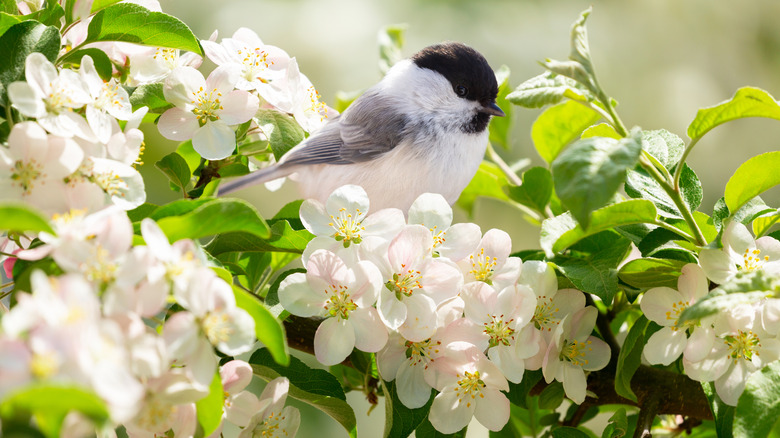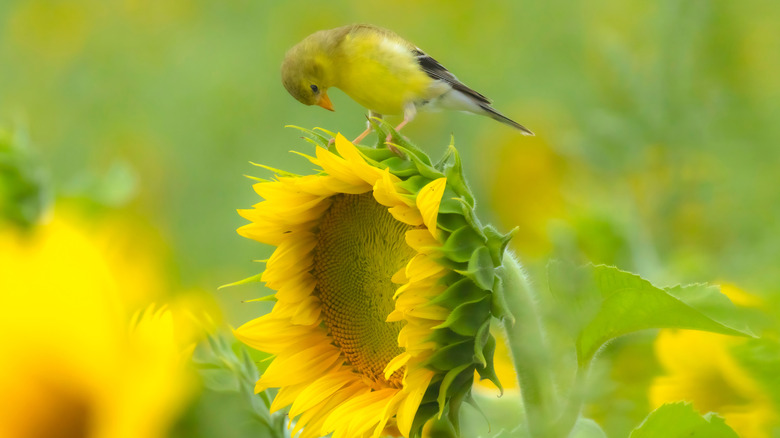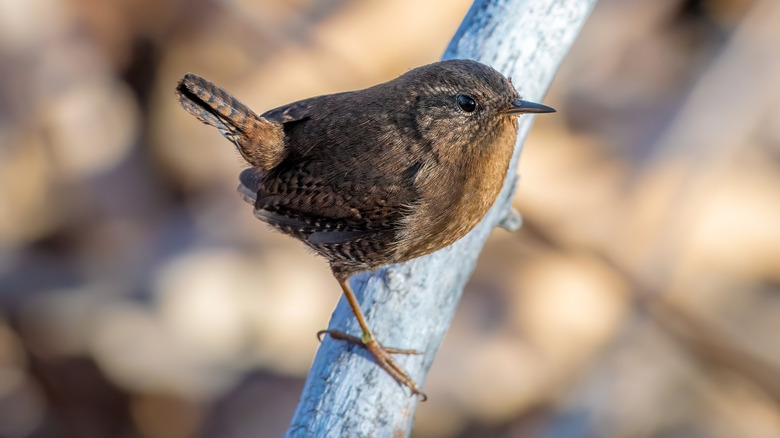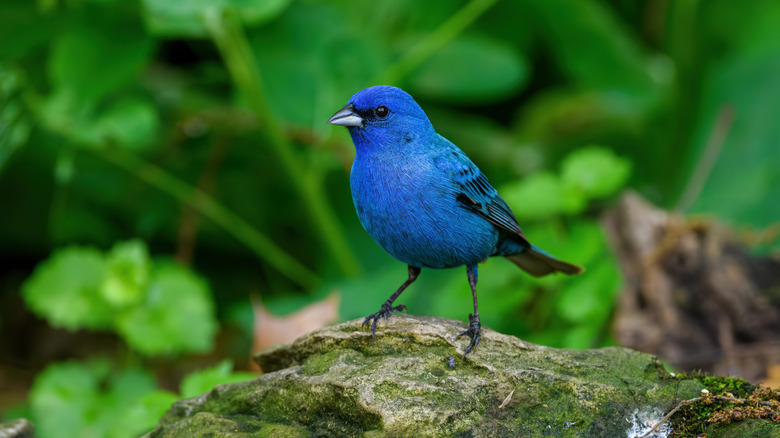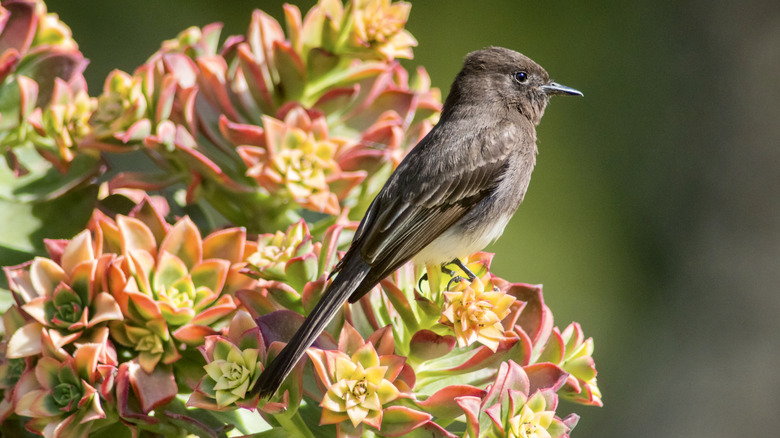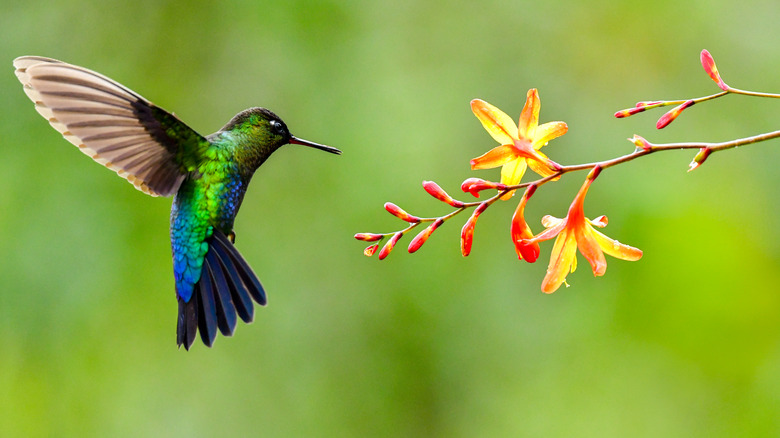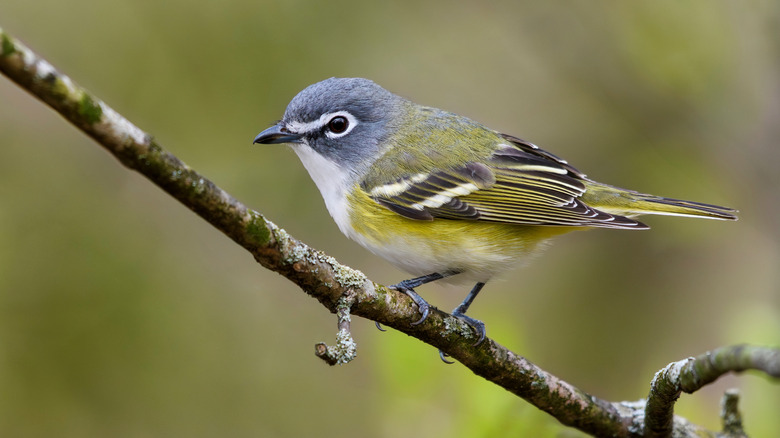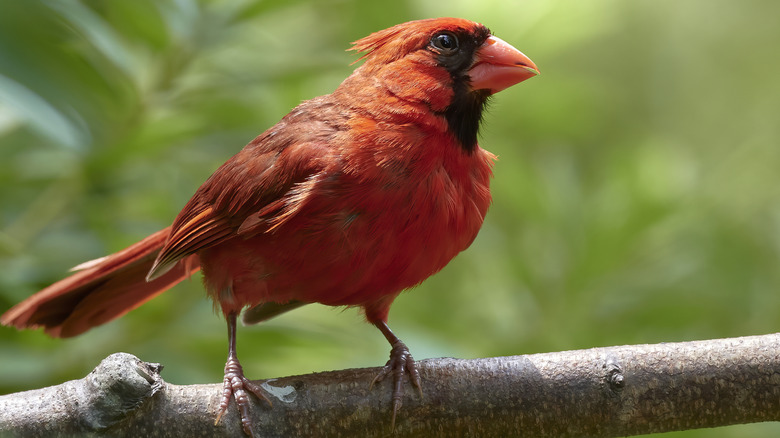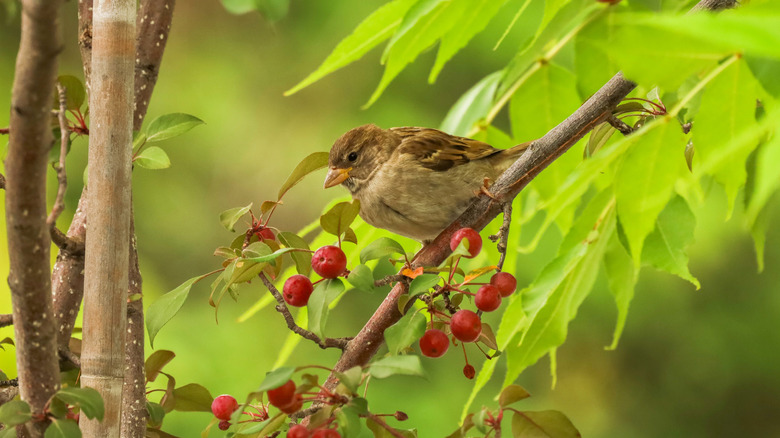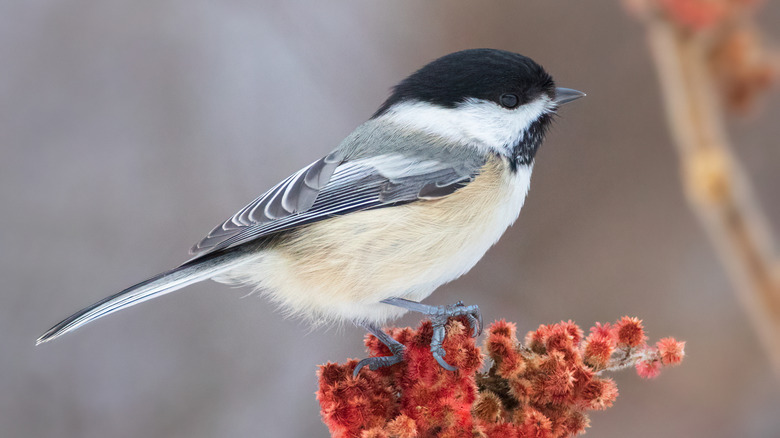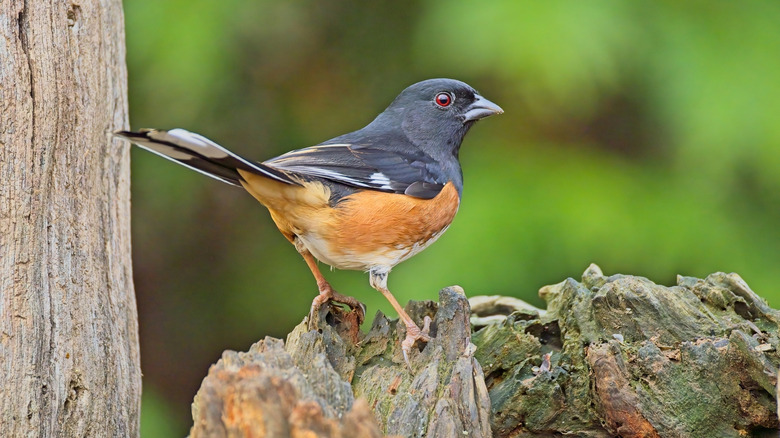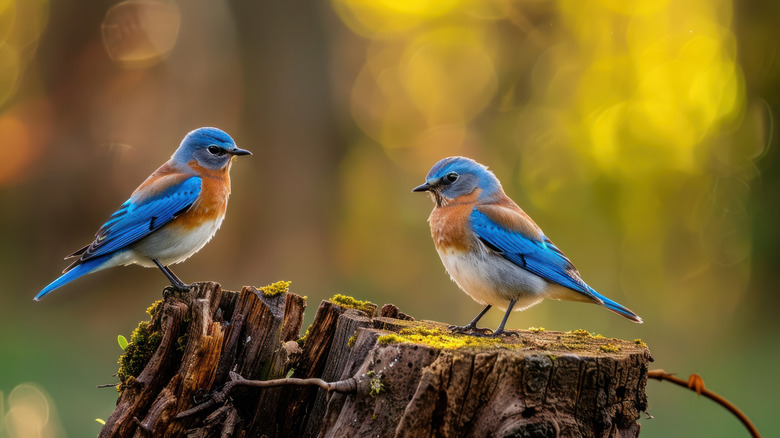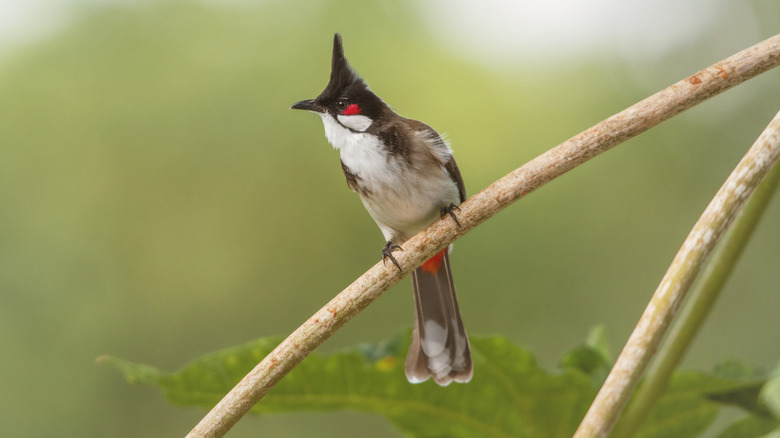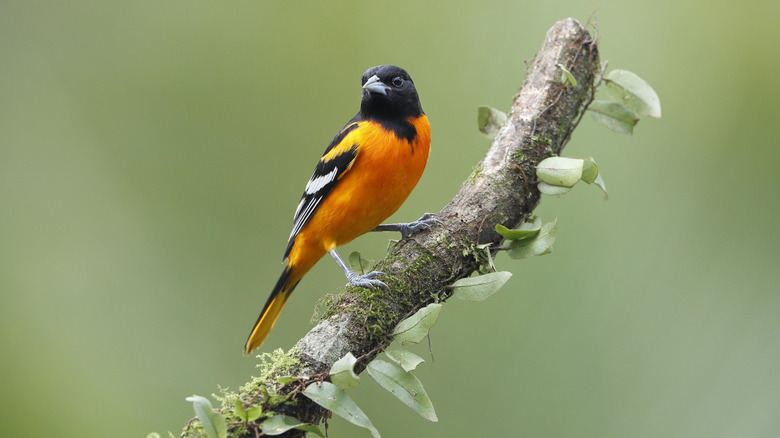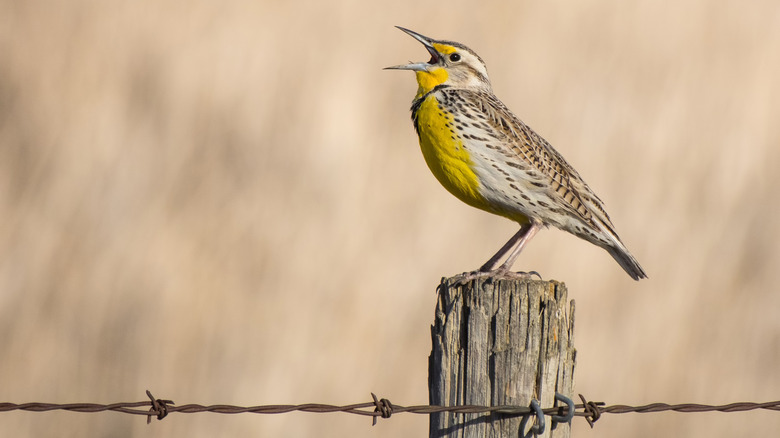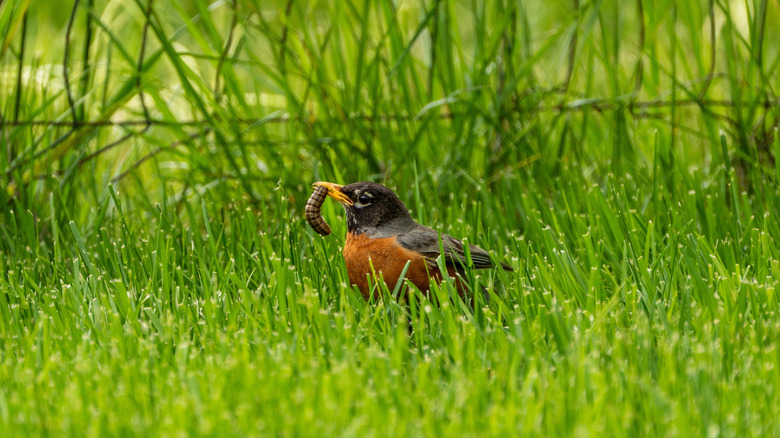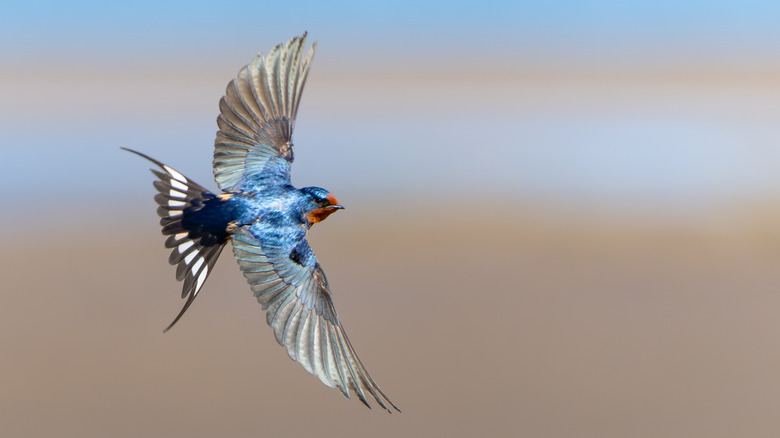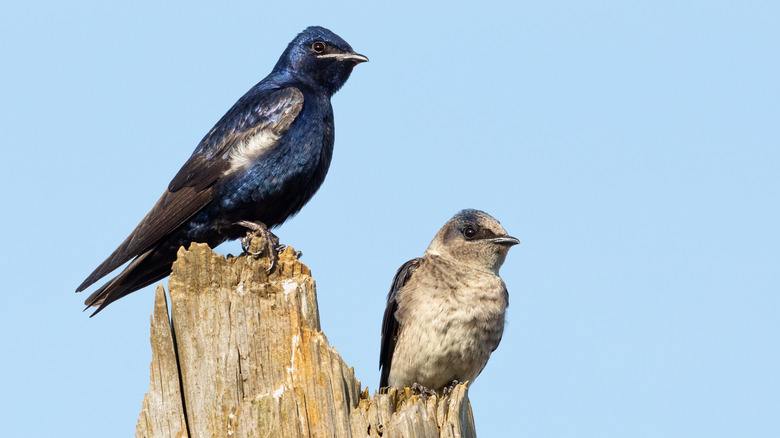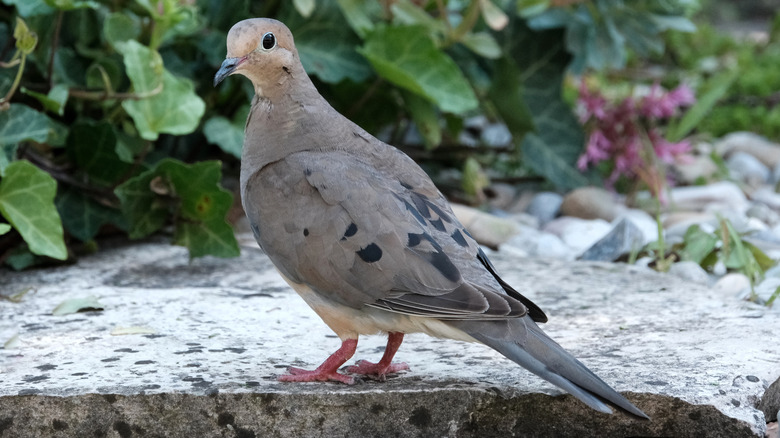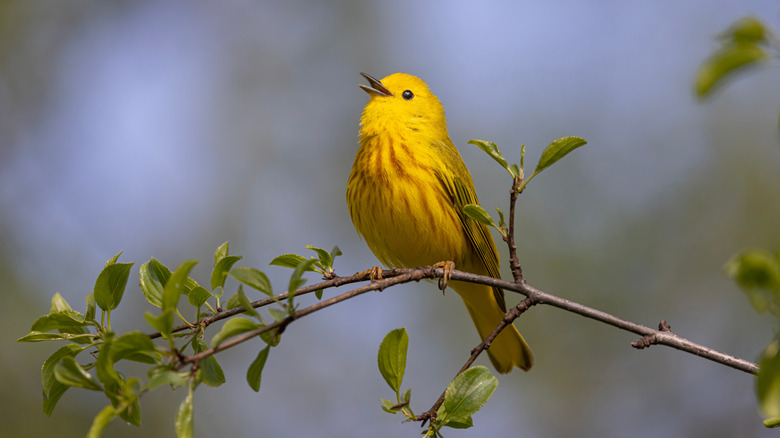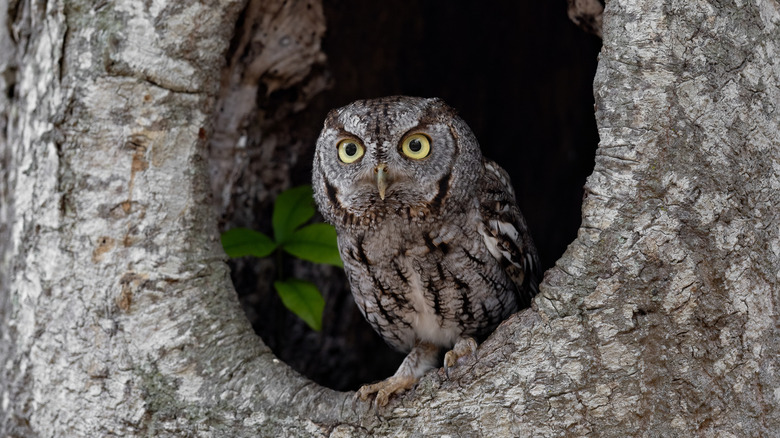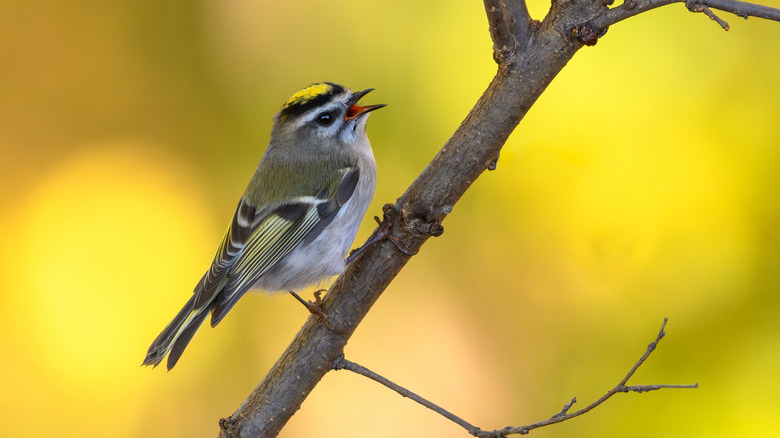21 Birds That Can Benefit Your Yard Or Garden With Their Friendly Visits
Pretty birds flitting across our garden or singing lively songs in our trees are a welcome addition in many backyards, but did you know songbirds offer more than just entertainment? The birds in our gardens don't just add a pretty burst of color or a charming birdsong, they can also be beneficial to the very flowers we want to grow.
Birds are exceptionally versatile, and have learned to live with people in a number of different environments, including our neighborhood parks and backyards. In the last few decades, many bird species have been on decline across North America, despite the vital role they play in the ecosystem. Now, more than ever, it's a good idea to recognize the important contributions birds make to our gardens.
Chickadees and other similar birds eat pests like caterpillars or moths that can do damage to plants and vegetables. In fact, chickadees might consume thousands of insects just to raise a single brood. Hate pulling weeds? Then you might want to see goldfinches in your yard since they love eating dandelion seeds and will help keep weeds at bay. Hummingbirds and orioles help pollinate your flowers. There are many ways birds can help our gardens thrive during their friendly visits to the garden.
Goldfinches help take care of weeds
The American goldfinch, the pretty yellow bird with the black highlights that you might see doing its share of aerial acrobatics in the garden, loves to eat the seeds of dandelions and other pesky weeds, which can help you keep a handle on them in the garden. While both male and female birds tend to the young in the nest, male birds take more of a caretaking role the older the hatchlings get and feed them longer than the females do.
Pacific wrens are vocal songbirds that eat snails
The Pacific wren is a small bird with a mighty song. Known for its complex and infectiously upbeat chirps, the Pacific wren and its small brown feathers might look unassuming, but it devours beetles and slugs that can destroy many kinds of plants and are a nuisance to gardeners. Pacific wrens don't nest high in trees, but in holes closer to the ground, such as rock crevices or in low-lying bird houses designed for them. Buy one, and then you can simply attract the birds to your bird house.
Indigo buntings will keep beetles at bay
If you've been dealing with an influx of grasshoppers or beetles in the yard that might be devouring your plants, the indigo bunting can help. Also known for their pretty songs, these birds love to snack on grasshoppers or beetles, and will help you keep your yard free of the pests. Fun fact about indigo bunting: Despite the fact that they look like they have blue feathers, they don't. Their feathers refract and reflect blue light, much like particles in the sky that make the sky look blue.
Black phoebes will hunt mosquitoes and other pests
Black phoebes are dynamic insect hunters and they'll target flies and mosquitoes, often snatching them right out of the air. If you want a yard free of biting flies and other pests, then you'll want to welcome black phoebes to your garden. They often sit in low lying branches near water and scan the horizon for insects that might make a good meal. Black phoebes, commonly found in Oregon, Alaska, and the Pacific Northwest, sometimes make mud nests under the eaves of homes or garages.
Hummingbirds help pollinate your flowers
While you watch hummingbirds zip quickly from flower to flower in the yard, know that they also serve an important purpose in the garden. Just like bees, hummingbirds can help pollinate flowers. Hummingbirds feed on nectar, but their feathers are also adapted with rough little edges that can catch pollen. As they dart quickly from one plant to another, often flapping wings at 70 beats per second, they scatter the pollen to other flowers. If you want to attract more hummingbirds to the garden, plant the beautiful garden solution hummingbirds can't get enough of.
Blue-headed vireos dine on moths
Blue-headed vireos tend to live and hunt high in the trees. They love to dine on moths, spiders, and other insects they find there. If you're tired of moths laying eggs that hatch into hungry caterpillars that ruin your garden vegetables, then the blue-headed vireo can help you keep the moths under control. The blue-headed vireos tend to spend summers in Canada and northeastern United States in states like New Hampshire, Vermont, and Maine. It winters in southern states like Florida and Texas.
Cardinals help keep you healthy
Beautiful red cardinals can brighten up any yard, and they're not just pretty visitors, they can be beneficial to your health as well. The American Journal of Tropical Medicine and Hygiene found that cardinals are super suppressors of the West Nile Virus. Not only do they eat mosquitoes, but if they are bitten by one infected by West Nile, they don't keep enough of the virus alive in their bloodstream to spread it. To see more of these birds, don't forget about the best type of bird seed for attracting more cardinals to your yard.
From weed suppression to pest control, house sparrows do it all
Where there are people, sparrows won't be far behind. There is fossilized evidence of sparrows living among humans way back thousands of years ago when early people lived in caves. They can survive foraging on city sidewalks where few birds other than pigeons usually thrive. Because sparrows are so adaptable, you'll find them in almost every state and across North America. While you might see them feasting on crumbs, they prefer to eat seeds, and specifically weed seeds, so they can help you control dandelions and other nuisance plants.
Chickadees target caterpillars
Chickadees are ingenious birds that hunt for worms and caterpillars, which can damage your garden vegetables and fruit trees. They find those pests by looking for damage to the plants and then they go in for the kill. Found in the northern United States and Canada, chickadees often will hunt for bugs by hanging upside down on a branch, feeding from the bottoms of leaves or other branches. They prefer living in wooded areas, but don't mind living in the suburbs if nesting trees are available.
Eastern towhee digs up grubs, slugs, or other pests
Eastern towhees are known for their birdsong that often sounds like "towhee", or to some, "drink your tea," which may be why a group of these birds is sometimes called a teapot. While these secretive birds can be hard to spot in trees, you might hear them scratching in dense brush and looking for their next meal — probably a grub, slug, or other pest that wants to devour your garden plants. Eastern towhees stay close to the ground, and typically build nests there.
Bluebirds bring happiness and fewer bugs
Bluebirds have symbolized happiness in many cultures for centuries, but it turns out, they really can make your garden a happier place. These birds can reduce mosquito populations as well as other possibly harmful insect pests. Bluebirds do so well consuming pests that they're welcome in commercial orchards. Sadly, they've lost a lot of their habitat in recent years and suffered a decline in population, but they've been starting to come back. When not nesting, bluebirds like to gather together in flocks and travel together.
Red-whiskered bulbul distributes seeds
Originally from India, the red-whiskered bulbul escaped from a Miami zoo in 1960 and since then has flourished in Florida. The bulbul helps distribute and plant seeds, as it loves to eat berries. They also help keep insect populations down as well. Bulbuls hunt for insects in midair, scooping them up in flight. They like to nest in the low branches of trees or low-lying shrubs, sometimes as short as 2 feet off the ground.
Orioles are unsung pollinator hereos
The brilliant black and orange Baltimore oriole is a surprisingly good pollinator and feeds off the nectar of flowers. They don't have long beaks or tongues like hummingbirds, so they tend to get pollen stuck on their feathers — just like bees get it stuck on their fuzz. Orioles are such good pollinators that they help to pollinate trees and flowers in both their winter and summer habitats, making sure to spread the love. If you want flowers and shrubs to spread and blossom, count on the hardworking oriole.
Meadow larks provide more than a telltale call
Western meadowlarks, known for their low, bell-like clunking sound of their mating call, love grasslands and can be found across the western United States, and rarely east of the Midwest. They're not just great for keeping caterpillar populations under control, but their ground nesting can help aerate the soil, making for better drainage and richer soil. It also tends to forage for food on the ground, poking holes in the soil with its beak.
Robins can help save your lawn
You've no doubt seen the bright red belly of an American robin darting across your yard or digging for worms in the grass. Robins are a common bird across North America. Often symbolic of spring, they love to feast on grubs and other parasites that chomp on your grass, so the birds might just be your lawn's best friend. Since robins spend so much time in our lawns, they can be especially vulnerable to the chemicals we put there. Robins can live to be as old as 14 years, but most don't live past six years.
The nimble barn swallow preys on pests
The barn swallow might be one of the most common birds, as it's found in both hemispheres all around the world. You'll know the fast moving bird by its forked tail and blue-and-red coloring as they glide close to the ground or water. Barn swallows get their name because they like to build their mud nests inside other structures, like under roof overhangs or in barns. They will help keep your yard free of biting flies, which they like to snag mid-flight.
Purple martins have been a welcome sight for decades
People have been welcoming purple martins into their backyards before, well, there were even yards. Native Americans hung empty gourds for the birds before Europeans arrived. Purple martin birdhouses were so popular that even John James Audubon, the famous birder and bird painter, said he noticed all inns in the 1830s seemed to have one. While purple martins will dive and loop to catch flying bugs, there's a myth about them that they eat 2,000 mosquitoes a day. While they do eat mosquitos, they aren't likely to eat quite that many.
Mourning doves help prevent weeds
You might know mourning doves by their soft, mournful calls, but they can also be beneficial in your garden. Mourning doves gobble up the seeds of weeds, which can help keep unwanted plants far from the garden. You might see them pecking at a lot of seeds, but they actually don't digest them all at once. They save some in a crop, a part of their esophagus. Mourning doves do well in dry areas, and can actually drink brackish water without getting sick. They also have a famous now-extinct ancestor: the passenger pigeon.
Yellow warblers eat pests and brighten the garden
Yellow warblers will bring joy to your garden with their sunshine-colored feathers and sweet song. They probably won't show any interest in the seeds at your bird feeder since they dine mostly on insects. But they'll keep your yard free of moths, mosquitoes, spiders, caterpillars, and other pests. Warblers have their share of troubles, though, as the brown-headed cowbird often tries to lay their eggs in warbler nests. Warblers don't always fall for this — they'll often just build a new nest right on top of the old one and start again.
Eastern screech owls hunt rodents and other pests
Eastern screech owls, which are about the size of a robin, can help your yard in a number of ways. The nighttime hunters can help keep your yard free of rodents, who can munch on your vegetables and spread disease. Of course, owls can also prey on other birds, especially starlings, but this ironically doesn't stop starlings from stealing an owl's old home in the hollow of a tree and build a nest there.
The golden-crowned kinglet eats aphids
You'll know the golden-crowned kinglet by his namesake's gold slash of feathers across its head, much like a flattened golden mohawk but they might be hard to find since they're almost as small as a hummingbird. Don't let their small size fool you, they're hardy birds that can handle cold winters where temperatures drop below 40 degrees Fahrenheit. They love to pick insects off shrubs and conifers, which is where you'll usually find them, as they help keep your yard free of aphids, gnats, and other pests.
